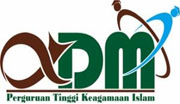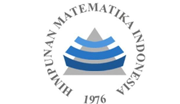A Data-Driven Framework for Integrating Decision-Making and Operational Efficiency in Multi-Product Retail: A Case Study with Experimental Evaluation
Abstract
In today’s highly competitive retail and industrial landscape, multiproduct retail systems face growing challenges due to complex operations, fluctuating demand, and market uncertainty. This paper presents a data-driven framework for optimizing integrated decision-making and enhancing operational efficiency. By utilizing historical transaction data and advanced analytical techniques, the model combines key operational functions—including demand forecasting, inventory management, and resource allocation—to support real- time, data-informed decisions. The approach employs predictive modeling and optimization algorithms to minimize operational costs while maintaining product availability and service level targets. The initial model features five interconnected components: inspection, distribution, disposal, recovery, and retail centers. However, it currently excludes forward logistics, fleet operations, and is limited to a single product and planning period. To address supplier uncertainty, a deterministic equivalent formulation is introduced, relying on the estimation of statistical moments from limited data. Since supplier selection is critical to effective sourcing strategies, improving this process directly enhances supply chain performance. The study highlights that accurately identifying and modeling operational uncertainties is essential for achieving robust and optimal outcomes in retail environments.
Keywords
Full Text:
PDFReferences
Al-Fawzan, M.A., & Al-Sultan, K.S. (2018). Optimization of production planning using genetic algorithm. International Journal of Advanced Computer Science and Applications, 9(6), 45-52.
Almeida, C. L., & Morabito, R. (2019). Production planning optimization for multi-product batch plants with uncertain processing times. Chemical Engineering Transactions, 72, 205-210.
A N Burnetas, C E Smith Adaptive ordering and pricing for perishable products Operations Research, volume 48, issue 3, p. 436 – 443 Posted: 2000.
A. Aouad, V. Farias, and R. Levi. Assortment optimization under consider-then-choose choice models. Available at SSRN: http://ssr.com/abstract=2618823, 2015
A. Aouad, V. Farias, R. Levi, and D. Segev. The approximability of assortment optimization under ranking preferences. Available at SSRN: http://ssrn.com/abstract=2612947, 2015b.
Aryza, S., Efendi, S., & Sihombing, P. (2024). A ROBUST OPTIMIZATION TO DYNAMIC SUPPLIER DECISIONS AND SUPPLY ALLOCATION PROBLEMS IN THE MULTI-RETAIL INDUSTRY. Eastern-European Journal of Enterprise Technologies, (3).
B Chen, X Chao Dynamic inventory control with stockout substitution and demand learning. Accepted at Management Science Posted: 2019.
Bar Ifrach, Costis Maglaras, Marco Scarsini, and Anna Zseleva. Bayesian Social Learning from Consumer Reviews. 2018.
Chris Anderson. The Long Tail: Why the Future of Business Is Selling Less of More. Hyperion, New York, 2008. doi: 10.5465/AMP.2007.25356519. URL http: //amp. aom. org/cgi/doi/10.5465/AMP.2007.25356519.
Chen, J., & Yang, X. (2020). Multi-objective optimization for production planning with a case study in a steel mill. Journal of Industrial and Production Engineering, 37(1), 47-61.
Daron Acemoglu, Ali Makhdoumi, Azarakhsli Malekian, and Asuman Ozdaglar. Fast and Slow
Learning From Reviews. Technical report, National Bureau of Economic Research,
Cambridge, MA, nov 2017. URL http://www.nber.org/papers/w24046.pdf.
D. Bertsimas and N. Kallus. From predictive to prescriptive analytics. arXiv preprint
arXiv:1402.5481, 2014.
D. Bertsimas and V. V. Misi6. Data-driven assortment optimization. Submitted, 2015.
Dimitris Bertsimas and Angela King. An algorithmic approach to linear regression. Operations
Research, 64(1):2-16, 2015.o89jbtt gb p
Felipe Maldonado, Pascal Van Hentenryck, Gerardo Berbeglia, and Franco Berbeglia. Popularity
signals in trial-offer markets with social influence and position bias. European Journal of Operational Research, 266(2):775-793, apr 2018. ISSN 0377-2217. doi: 10.1016/J.EJOR.2017.10.056. URL https://www.sciencedirect.com/science/ article/pii/S377221717309852.
Gilvan C. Souza, Barry L. Bayus, and Harvey M. Wagner. New-Product Strategy and Industry Clockspeed. Management Science, 50(4):537-549, apr 2004. ISSN 0025-1909. doi: 10.1287/mnse.1030.0172. URL http://pubsonline.informs.org/doi/abs/10.1287/ mnsc.1030.0172.
G. Vulcano, G. van Ryzin, and R. Ratliff. Estimating primary demand for substitutable products from sales transaction data. Operations Research, 60(2):313-334, 2008.
G. Vulcano, G. van Ryzin, and W. Chaar. Choice-based revenue management: An empirical study of estimation and optimization. Manufacturing and Service Operations Management, 12(3):371 - 392, 2010.
Hidayat, R., & Mustofa, K. (2019). Optimasi multi produk dengan metode simulated annealing pada produksi gula kristal. Jurnal Inovasi Teknik Mesin, 1(2), 96-100.
Kris Ferreira, David Simchi-Levi, and He Wang. Online network revenue management using thompson sampling. Operations Research (forthcoming), 2018.
Lee, H. L., & Rosenblatt, M. J. (1986). Simultaneous determination of production run length and safety stocks in a stochastic multi-product production system. Management Science, 32(8), 960-966.
Li, X., & Yin, Y. (2017). Production planning and scheduling optimization in process industry. Journal of Industrial and Production Engineering, 34(3), 179-188.
Ming Hu, Joseph Milner, and Jiahua Wu. Liking and Following and the Newsvendor: Operations and Marketing Policies Under Social Influence. Management Science, 62(3):867-879, 2016. ISSN
Ma, J., & Tang, W. (2018). Multi-objective optimization of production planning for a multi- product production system. Journal of Intelligent Manufacturing, 29(2), 467-479.
Niu, Y., Guo, L., Wu, Y., & Xu, X. (2019). Optimization of production planning for a multi- product batch plant using hybrid genetic algorithm. Computers & Chemical Engineering, 121, 80-89.
Rangel-Miranda, O., & Gutiérrez-Tapia, C. (2020). Production planning optimization in a multi- product batch plant through genetic algorithms. Computers & Chemical Engineering, 138, 106856.
Seyedhosseini, S. M., Safaei, N., & Seyedhoseini, S. M. (2019). An integrated model for multi- objective production planning in multi-product batch plants. Journal of Cleaner Production, 231, 1231-1246.
Santos, J. F. D., Campos, L. M. S., & Almada-Lobo, B. (2021). Multi-product production planning optimization model for the food processing industry considering raw material and energy consumption. Computers & Industrial Engineering, 158, 107374.
Tavakkoli-Moghaddam, R., Fazel Zarandi, M. H., & Ghodsi, R. (2019). A hybrid multi-objective multi-product production planning optimization model with environmental considerations. Journal of Cleaner Production, 208, 1304-1315.
Yudoko, G., & Santosa, B. (2017). Optimasi produksi gula rafinasi dengan menggunakan algoritma genetika. Jurnal Teknik ITS, 6(1), A332-A337.
Wang, Z., Zhang, J., & Zhang, H. (2019). Multi-objective production planning optimization for manufacturing systems with multiple product lines. Journal of Intelligent Manufacturing, 30(5), 1865-1879.
DOI: http://dx.doi.org/10.30829/zero.v9i1.24301
Refbacks
- There are currently no refbacks.

This work is licensed under a Creative Commons Attribution-ShareAlike 4.0 International License.
Publisher : Department of Mathematics Faculty of Science and Technology Universitas Islam Negeri Sumatera Utara Medan | |
✉️ Email: zero_journal@uinsu.ac.id 📱 WhatsApp:085270009767 (Admin Official) | |
 |  |  |  |  |



